Boisean who urges tongue-tie fix on babies is investigated. What 4 families experienced
Lauren Lavelle didn’t know much about breastfeeding when she became pregnant with her first daughter in 2018. So she sought help from Melanie Henstrom, a lactation consultant in Boise, a few months before she gave birth.
She bought a package from Henstrom that included a prenatal visit, a breastfeeding class and three hospital or at-home visits. Lavelle wanted to be sure she had assistance in those critical days after delivery, where breastfeeding difficulties are most likely to occur.
And right away, her daughter had trouble breastfeeding. Even with help from nurses and lactation consultants at the hospital, the infant was unable to establish a good latch.
Henstrom recommended a procedure commonly called a tongue-tie release. A dentist would laser the webbing underneath the baby’s tongue, which she said would fix the problem by allowing the tongue to move more freely, according to Lavelle. So Lavelle and her husband agreed.
Lavelle told the Idaho Statesman that the experience led to “the absolute darkest time of my life.”
It also led to a case that has drawn national attention to the risks of an increasingly popular procedure performed by dentists and others on babies who struggle to breastfeed. It led to questions about whether lactation consultants are qualified to diagnose tongue-ties and recommend the procedure. And it led to an investigation of Henstrom by an international board that trains and certifies lactation consultants.
Henstrom told the Statesman what happened isn’t her fault, and that the international board does not have guidelines on wound management, leaving many lactation consultants in the dark.
Infants must ‘latch’ to breastfeed
Lavelle endured a difficult, 29-hour labor, where her daughter’s shoulder got stuck on the way out. After the baby, named June, arrived Aug. 6, 2019, at St. Luke’s Children’s Hospital in downtown Boise, she refused to latch.
“The lactation consultants at the hospital were kind of stumped,” Lavelle said. “One of the pediatricians making the rounds suggested that my baby might be having trouble because her tongue was really tight.”
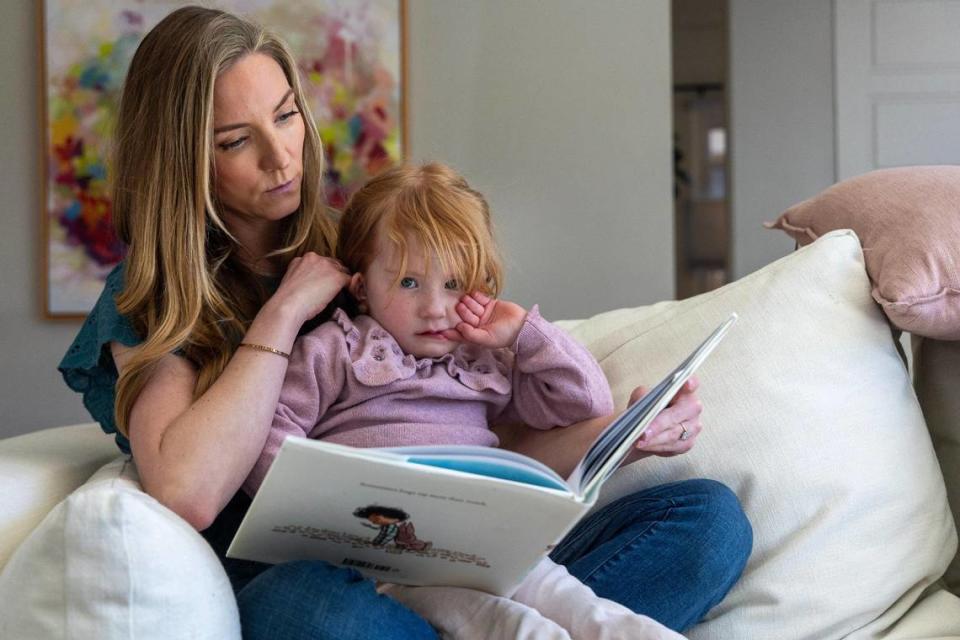
The pediatrician diagnosed her daughter with an anterior tongue-tie, where a band of tissue tethers the tip of the tongue to the floor of the mouth, preventing it from moving as it should. About 10% of infants are born with tongue-tie, also known as ankyloglossia, according to the Mayo Clinic. The most common symptom for newborns is difficulty breastfeeding.
Their pediatrician and another pediatrician clipped the excess connective tissue to release the tie. The procedure, called a frenotomy, was quick and painless, Lavelle said.
Afterward, Lavelle said, the first pediatrician commented that June might also have a posterior tongue-tie, caused by connective tissue farther back and below the tongue. She said the pediatrician told her that physicians don’t typically correct those, because there’s not enough peer-reviewed research to show it’s a successful method of increasing breastfeeding odds.
Henstrom disagreed. She told Lavelle by text, without assessing June herself, that the anterior release already performed by the pediatricians wouldn’t entirely fix the problem, Lavelle said. Henstrom warned her that untreated posterior tongue-ties can lead to serious medical issues in babies and children, including failure to breastfeed, migraines, speech problems and oral malformation, among other conditions, Lavelle said.
“This condition is unique and often misdiagnosed by pediatricians,” Henstrom’s website says.
Lavelle said Henstrom told her June would need to see a pediatric dentist as soon as possible to correct the posterior component of her tongue-tie. Henstrom said in an interview with the Statesman that she does not diagnose but will assess and make recommendations.
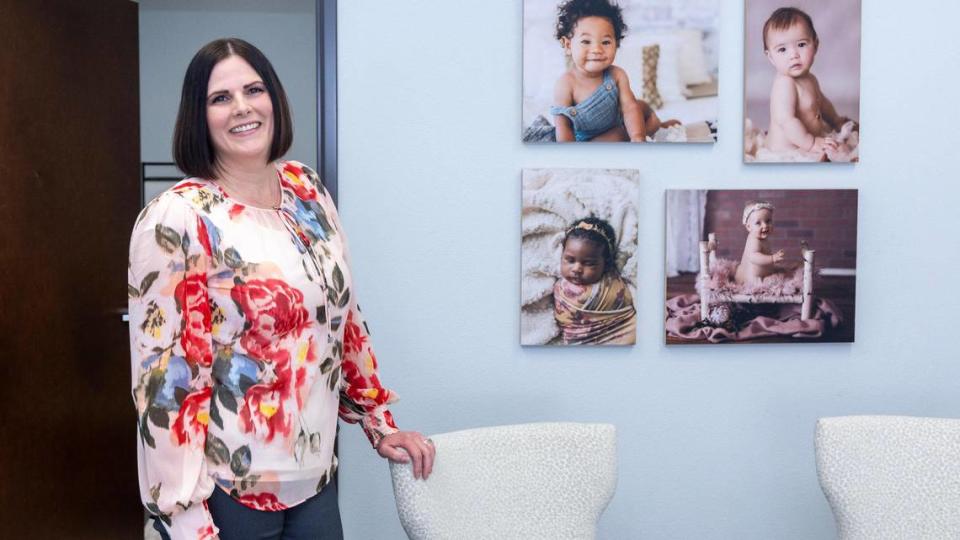
“As we were talking about it more, she starts in with her fear campaign,” Lavelle told the Statesman. “The list of things she said my daughter was going to suffer from … . As a brand-new parent, you have no idea.”
An ‘overpowering feeling: This is not safe’
Lavelle and her husband were apprehensive. But at Henstrom’s urging, Lavelle said, they scheduled a last-minute appointment on a Saturday, four days after June’s birth, with Dr. Sam Zink of Zink Dental, at 1000 N. Curtis Road in Boise.
On his website, Zink has a page dedicated to infant frenectomy that says he uses a precision laser to allow for more control and less patient discomfort than a blade would provide. The procedure takes only a few minutes, and appointments rarely last longer than an hour, it says.
Henstrom assisted the family at the appointment, counting it as one of the lactation visits included in the package they purchased. The assistance otherwise would have cost $100, Lavelle said.
During the appointment, Lavelle said, Henstrom and Zink looked in her daughter’s mouth, confirmed the tie and said it needed to be revised. They also told her that June had a lip-tie that would need to be corrected. Then, they briefly explained the procedure, said the risks were minimal, and said most babies experience no problems or adverse reactions, according to Lavelle. At most, Lavelle and her husband were warned, their newborn may have some “mild fussiness” for a few days.
When Zink brought June in to the procedure room, Henstrom joined him. But first, she pulled out a white noise machine to muffle the infants’ cries, Lavelle said.
“I had this overpowering feeling that, ‘This is not safe; your baby is in danger,’” Lavelle said. “And I just ignored it.”
No to Tylenol, yes to homeopathy
The procedure cost $600, she said. It was not covered by insurance.
Afterward, when discussing pain management, Lavelle said Henstrom told the family not to give the baby Tylenol and recommended homeopathic pain-management remedies instead.
Henstrom denies this. She said she explains to all her clients that Tylenol is an option, but that it’s tough on the liver, and research has shown that it can deplete a major component of the immune system.
“Most babies do totally fine with homeopathic,” she said.
Multiple studies published in the National Library of Medicine in the last few years said that even though acetaminophen, the active ingredient in Tylenol, is widely believed by pediatricians and parents to be safe for use in infants and children when used as directed, mounting evidence indicates that exposure to the drug early in life “may cause long-term neurodevelopmental problems.”
As part of the after-care, Henstrom also instructed Lavelle and her husband to perform daily “stretches” on the wound to prevent it from reattaching.
For days, June was inconsolable. And still she refused to breastfeed.
During a visit to Lavelle’s home, Henstrom demonstrated how to perform the stretches, moving her finger around inside the infant’s sore mouth, Lavelle said. She said she thinks the pressure may have reopened the wound.
June cried so hard that “she turned purple in the face,” Lavelle said. “She would bring her hands to her cheeks and claw at her own face.”
She and her husband took June to the emergency room at St. Luke’s Children’s Hospital. A doctor looked in the baby’s mouth and said, “It breaks my heart to see a sore this big in the mouth of a baby this little,” according to Lavelle.
The doctor asked why they hadn’t administered a pain relief medication such as Tylenol. He worried the pain would cause the infant not to eat.
Mom feels guilt as baby screams for hours
Lavelle said the experience made her feel guilt and shame.
“I just wanted to disappear,” she said. “I couldn’t eat. I couldn’t sleep. I thought, ‘My daughter deserves a better mom.’”
For months, June was incredibly fragile. She would scream for hours each day. One provider suggested her nervous system had been formed around pain and trauma, Lavelle said, and recommended they essentially return her to the womb: “No loud noises, no visitors. Make her feel like she can trust the world again.”
Lavelle took that advice. And gradually, June improved. Gradually, the mother regained confidence.
“I remember when we took her to Certified (Kitchen and Bakery) in the North End for brunch and I finally felt like, ‘Wow, we’re doing it,’ ” she added. “That was when June was 6 months old.”

But Lavelle’s shame had turned to anger. And a plan.
She filed a complaint against Henstrom in late 2020 with the International Board of Lactation Consultant Examiners, a credentialing body based in Fairfax, Virginia, that has certified over 37,000 lactation consultants around the world, including Henstrom. In the complaint, she detailed what she believed to be code-of-conduct violations.
She said Henstrom acted “outside the limits of (her) scope of practice” when she provided after-care instructions, advised on medication for pain management and performed follow-up care as problems arose. Lavelle said Henstrom “used fear-based language” and other tactics during discussions about June’s health to “manipulate (Lavelle and her husband) into agreeing to a revision.”
Lactation consultant starts Baby Bonds in Boise
The lactation board opened an investigation into Henstrom this year following reporting by The New York Times in December that drew attention to the business of tongue-tie releases and how the procedures are increasingly recommended to new mothers struggling to breastfeed. The Times article opened with an anecdote about Henstrom.
Henstrom told the Statesman that she was aware of complaints about her but hadn’t heard from the lactation board on the matter for about 3½ years. She said they contacted her a week after the Times published its story, likely because of “social pressure.”
”The complaints, in my opinion, are not enough to remove certification or even be reprimanded for,” Henstrom said. “It is egregious to say I am responsible for this. I am not the release provider. And sometimes the brain and the tongue don’t quite figure things out. That’s not my fault either.”
One study published in the National Library of Medicine in 2017 noted that there are few high-quality studies addressing frenotomy outcomes in breastfeeding. Despite this, the data shows an increase in tongue-tie diagnoses and the use of frenotomy to treat it.
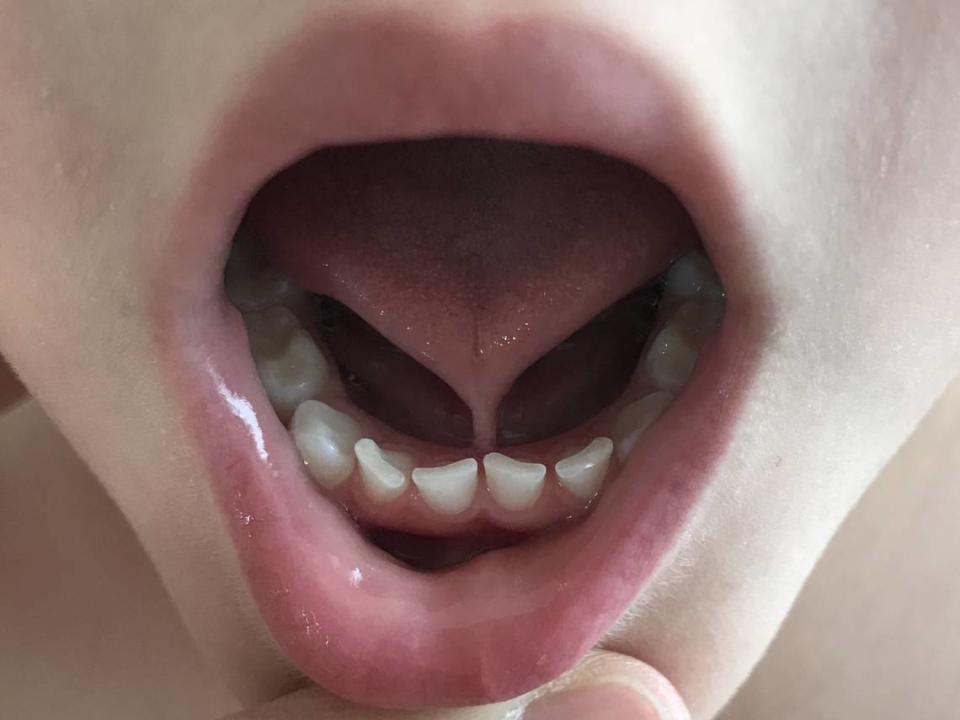
Henstrom has been a lactation consultant for over seven years, with one of those years spent under the supervision of a midwife.
She received her training in Portland, where she did infant massage and worked as a postpartum doula. To become a certified lactation consultant, she was required to take 14 prerequisite classes including biology, chemistry, anatomy and physiology, though she already had the credits from studying nursing in college. She also had to report 90 hours of lactation-specific education and 500 clinical hours. Then, she sat for the lactation board’s exam.
Henstrom said it takes most lactation consultants one to three years to become certified. Every five years, they have to recertify.
She started her lactation consulting business, Baby Bonds, at 8601 W. Emerald St. in Boise, in 2017, after moving to Boise. On her website, where she lists common breastfeeding issues, she jokes, “don’t get me started on tongue-tie.”
Henstrom denies she did anything wrong in Lavelle’s case. She sympathizes with what the family endured but said that while most babies show improvement post-procedure, there’s always a risk.
Henstrom noted that the lactation board has no guidelines on wound management, and when asked, has advised lactation consultants to consider evidence-based professional literature and state and local laws. No laws regulate lactation consultants in Idaho.
She hopes the investigation spurs the board to create such guidelines.
“These wounds do need to be stretched or they will heal closed, and then the procedure will be for naught,” Henstrom said. “When parents or providers are doing the stretches, sometimes some tissue will give, and that is the point of the stretch — to prevent it from reattaching.”
Henstrom said stretching is an industry standard. Wound management is taught at lactation consulting conferences around the country, she said.
She said the local providers she knows who perform tongue-tie releases routinely turn wound management over to lactation consultants because the consultants are already involved in providing post-procedure care to the mothers to ensure the infants are ingesting enough milk and gaining weight.
“I care so much about each client and advocate for what experience has shown to be most effective at helping these moms and babies,” she said.
Boise dentist says infants don’t need wound stretches at home
Dr. Craig Blaisdell, a Boise dentist, said that his office typically does two or three frenotomies a month, mostly on infants. He told the Statesman he doesn’t recommend much stretching or wound management at all for infants.
And he won’t perform the procedure, which he does using a laser, on babies older than 6 months, because they squirm too much and he wouldn’t be able to do it safely, Blaisdell said. The youngest patient he’s seen was 6 days old.
He said most parents don’t want to be in the room during the release, because the child may scream or cry.
”We don’t have the infants do any sort of significant amounts of stretching because in our experience they heal so quickly, the tissue is very thin, and the stretching done by nursing is sufficient enough to prevent reattachment,” he said by phone. “The exercises that they do are breastfeeding.”
But he does advise adult frenotomy patients to do the stretches, because they don’t move their tongues nearly as much as a nursing baby would, and therefore have a greater chance of reattachment, he said. Those stretches include lifting the tongue, moving it from side to side and sticking it out. And then, with a clean finger, going in and massaging the wound.
After performing the procedure on a newborn, Blaisdell said, he’ll give the mother privacy, either in a room at the office or out in her car, to sit for 10 or 15 minutes and try to breastfeed. Then he’ll check on them or call that night to follow up once they’ve gotten home.
He said all of his infant frenotomy patients have healed “very normally and without incident.”
The mothers will say, “This is a world of difference. Things are so much better,” he said. “That’s been our experience.”
Henstrom sent an email March 15 to tongue-tie-release providers in the Valley that said she’s an administrator of an Idaho tongue-tie Facebook group and would be creating a list of preferred providers “who we know are doing full releases” to refer parents to.
A full release means getting all of the tissue underneath the tongue removed, creating a diamond-shaped wound. It is more extensive than either an anterior tongue-tie near the front of the mouth or a posterior tongue-tie further back.
“Sometimes the laser gets all the tissue, but more times than not, there is some fascia that is still left,” Henstrom said in the email. “By doing the full release we also decrease risk of reattachment as all of the tissue that is tethered has been removed.”
In her email, she said there would be a vetting process, and for providers who wish to be included in the list, she asked that they:
Acknowledge receiving the email.
Agree to perform the procedure only if the infant and the family are working with a lactation consultant certified by the lactation board before and after the release.
Send three photos of full tongue-tie releases immediately following the procedure or invite Henstrom to their clinic to witness a full release being performed.
Acknowledge watching a video on tongue-tie that was attached to the email.
Lactation board: No comment
Susan Brayshaw, a spokesperson for the lactation board, declined to comment on Lavelle’s complaint, citing confidentiality.
“(The lactation board) is unable to comment on any prior or ongoing complaint or investigation, nor even whether there is a pending complaint against an individual,” Brayshaw said by email.
According to its sanctions list posted online, the board has revoked the certificates of only three lactation consultants since 2002, barring them from applying for reinstatement in the future.
Lavelle also filed a complaint against Zink with the Idaho State Board of Dentistry in December 2020. The complaint was dismissed, according to documentation provided by Lavelle. Zink did not respond to a Statesman email requesting comment.
”He is the person responsible,” Lavelle said. “One provider put it to me this way: He made that wound. That wound is his. He shouldn’t delegate after-care to her.”
Lavelle shared a copy of Zink’s response to her complaint with the Statesman. Zink said that he’s had hundreds of positive frenotomy outcomes, and this was his only complaint. He said the benefits of the procedure outweighed the risks, and that an “extremely small percentage” of patients do not respond successfully to the procedure.
Dentistry board: No comment
Bob McLaughlin, spokesperson for the dentistry board, said Idaho law prohibits the board from commenting on or even acknowledging complaints, investigations or informal actions, which are confidential.
“If it’s egregious enough that it rises to the level where a formal action is taken … then that legal document would show up on the licensee’s online record,” McLaughlin said by phone. Since Lavelle’s complaint was dismissed, Zink’s record is clean. There were no disciplinary actions taken against him. The online record shows that his license was issued in 2018 and expires in September.
Lavelle said she’s not the only client of Henstrom’s or Zink’s who has submitted complaints. After her experience, she began connecting online with other families in the area who recounted similar experiences.
White-noise machine and the smell of charred flesh
In December 2022, a Nampa mother, Aubrey Nobili, sought Henstrom for breastfeeding support. Her newborn, Vivi, was struggling to get enough milk and was rapidly losing weight, despite frequent, around-the-clock nursing. She and her husband visited their pediatrician, who suggested Nobili start pumping so they could monitor how many ounces of breast milk Vivi was actually getting. Then they turned to Henstrom for additional lactation support.
Henstrom assessed Vivi in her office, performing a “suck test,” where she stuck her finger in the infant’s mouth, and then said the baby had failed, according to Nobili. She recommended tongue-, lip- and cheek-tie releases — a total of four incisions.
A cheek-tie, also called a buccal-tie, is when the tissue that connects the cheeks to the upper gums is abnormally tight. Similarly, a lip-tie is when the tissue attaching the lip to the gums is too tight, restricting movement.
Three days later, they were in Zink’s waiting room.

Nobili said she and her husband, Ryan, felt pressured to have the procedure done because Henstrom “was so confident” that it would be the lone solution to their infant’s struggle to adequately feed and gain weight. And they had to make a decision fast, because every day, Vivi was failing to gain weight.
“The most infuriating part about this is that she told us she had a 100% success rate,” Nobili said. “We felt confident we were going to be in good hands.”
Still, the couple expressed apprehension at getting the cheek releases in addition to the tongue and lip releases. They felt it was too much for a 3-week-old infant to endure. But at Henstrom’s urging, they reluctantly agreed, Nobili said.
So Zink took the baby to the procedure room, and on came the white-noise machine.
“I went back into the room she told us to wait in, and over the blaring noise of the sound machine I hear my baby screaming,” Nobili said. “What felt like an eternity was probably just a few minutes. Melanie comes walking back in with my baby and she’s crying, the crying no mom wants to hear.
“She takes my infant’s head and pushes it into my breast, and I can smell the charred flesh in her mouth. I’m just thinking to myself, ‘What have I done?’ ”
They paid $400 for the procedure. Nobili said they were initially quoted $800, but because it wouldn’t be covered by health insurance, they shopped around for another provider who would take their insurance.
When they found one, and told Henstrom, the lactation consultant said she didn’t recommend that provider, but couldn’t explain why because of a federal law that limits the release of a person’s medical information, according to Nobili. Henstrom told them Zink would offer them a discount, instead. She spoke highly of his ability, Nobili said.
Henstrom told the Statesman there is one provider in the Boise area with whom she no longer works because of an incident where the laser had “burned into the muscle.” She declined to name the dentist.
“That was the only one that was botched,” she said.
Nampa mother’s baby still can’t breastfeed
After Vivi’s procedure, the infant went 12 hours without eating. She never breastfed again.
“It was almost as if she developed an aversion to me,” Nobili said. “She would latch and then she would instantly fall asleep. Her tongue was all over the place in her mouth. We were considering syringe feeding her the milk because we were so worried and scared.”
Even now, at over 16 months old, the child can’t eat solid food. Most experts recommend that parents introduce solid foods at about 6 months old, the Centers for Disease Control and Prevention says.
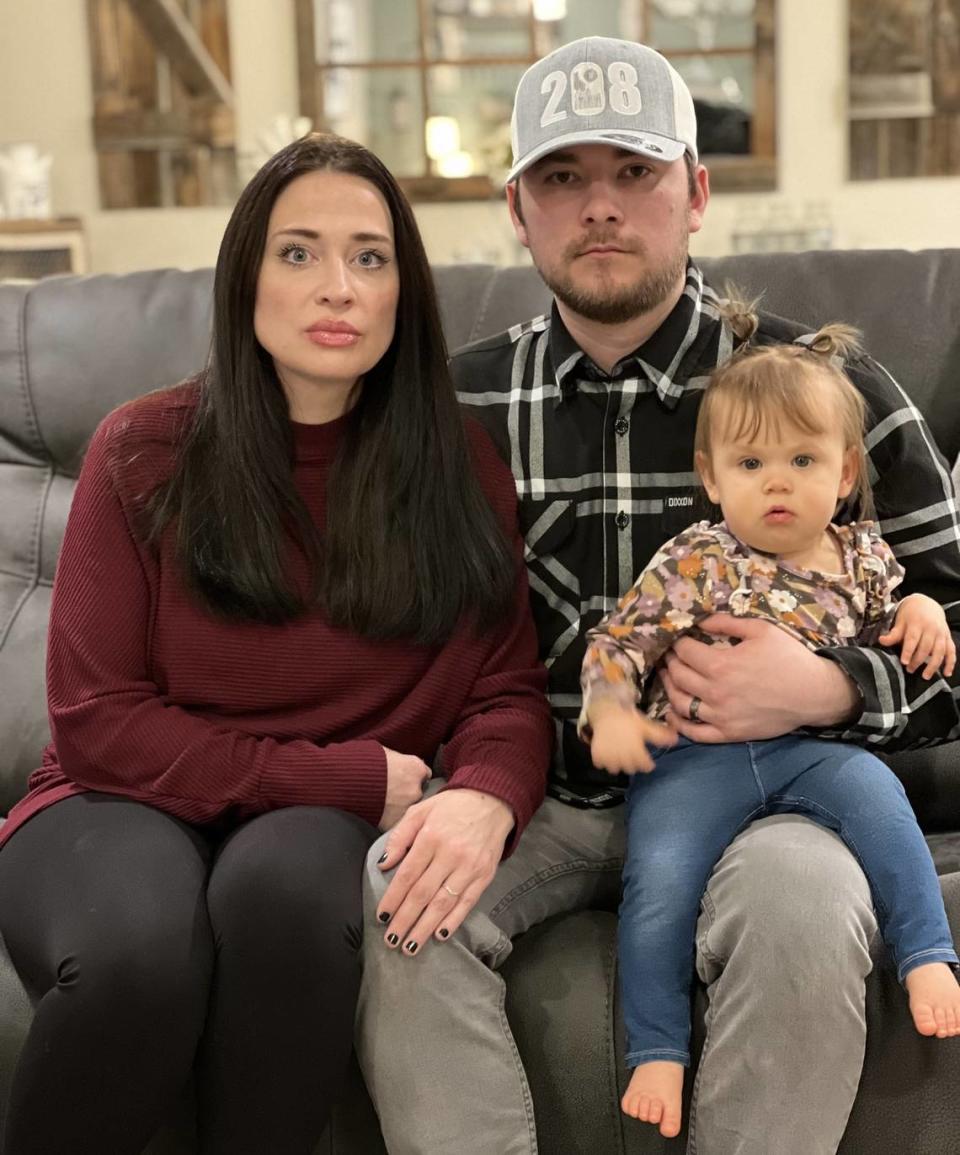
Nobili said a swallow study concluded that Vivi has oral dysphagia, meaning she struggles to use the mouth, lips and tongue to control food or liquid. According to a speech therapist, her development is several months behind where it should be.
Nobili and her husband are learning sign language in an effort to communicate with her.
The baby also has an oral aversion, or a reluctance or refusal to breastfeed or eat. That’s something Nobili says she wasn’t aware was a possible risk before the procedure. One specialist said Vivi’s oral aversion may be related to the pain she experienced after the release, Nobili said.
She said the stretches Henstrom instructed them to do on Vivi’s wound were “barbaric.”
Nobili and Ryan, who works at Costco, have spent over $13,000 on various specialists, feeding tools, therapies and other expenses for Vivi, despite having health insurance through his job. Nobili is a stay-at-home mother. The couple has four other young children.
“We have no guarantee at this time that she will ever be able to eat or speak normally,” Nobili said. “She still struggles with choking episodes. We just never thought that, 16 months later, this is where we would be. It’s flipped our entire world upside down.”
Another Nampa mother cites Henstrom’s success
Henstrom maintains that most of her patients report good results. She pointed to her Google reviews, which are filled with dozens of positive reports.
Henstrom said that, in any given month, she sees about 30 clients, and of those, about 20 will consider a tongue-tie release. She noted that the incidence of tongue-tie in those babies is high because they’re already coming to her with breastfeeding issues.
Sarah Perkins, a Nampa mother, didn’t know Henstrom when she gave birth to twins in 2014 but wishes she had.
“We were told that they did not have any tongue-ties, and they both actually did,” Perkins said by phone. “I don’t even think Melanie was in our area back then. So now we’re struggling with some of the ramifications of not having those revised.”
When her youngest child, Gavin, was born in 2018, she knew she would need lactation support because she has polycystic ovarian syndrome, or PCOS, a common hormonal disorder that causes enlarged ovaries with small cysts. PCOS is linked to low milk supply in breastfeeding mothers. Perkins said her pediatrician recommended Henstrom.
After her delivery, the same pediatrician diagnosed Gavin with tongue- and lip-ties. Henstrom agreed. She supported the family through the process. Perkins went on to breastfeed Gavin for two years.
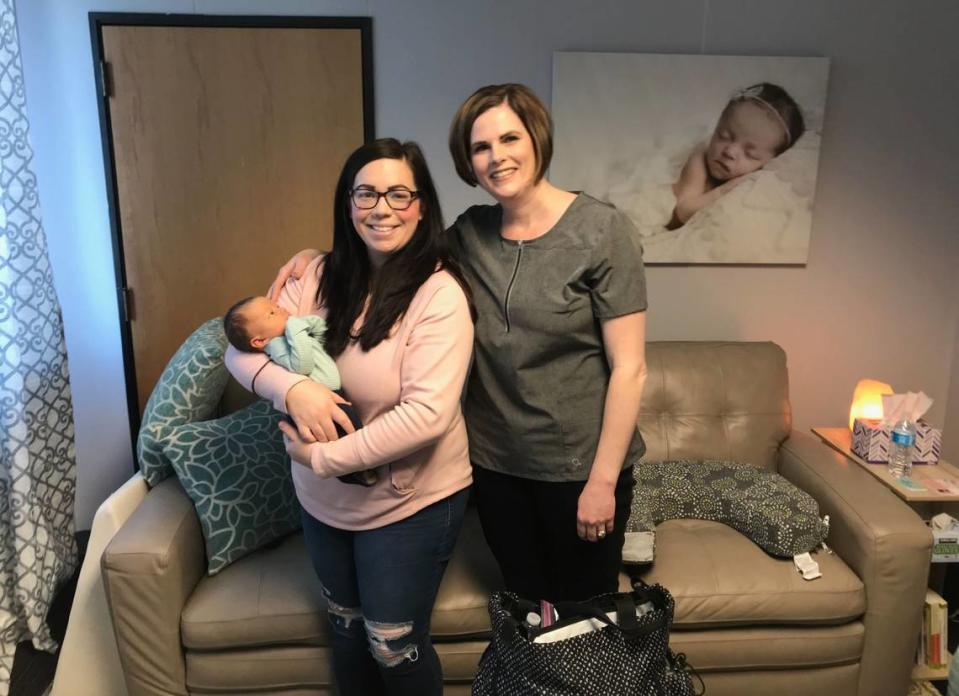
“It was very fast,” she said. “They brought him back to me, and then Melanie helped him latch, and right away you could tell it was a night-and-day difference. His mouth was able to open better, and he had more range of motion.”
As for her twins who didn’t get the procedure, one has mouth-breathing and dental issues and a small, narrow palate and airway, she said.
“We think he has sleep apnea,” Perkins said. “Right now he’s actually in the process of getting a palate expander, and then once his mouth is wide enough, we’ll also be getting his tongue revised. Knowing more now, they were tongue-tied and couldn’t breastfeed properly.”
Perkins said she also has a tongue-tie and believes her husband does, too. One study published in the National Library of Medicine concluded that the condition has a “significant hereditary nature.”
Eagle mom calls Henstrom ‘newborn fairy godmother’
Mallory Murphy, who lives in Eagle, gave birth to fraternal twins in September. She hired Henstrom for lactation support in advance, at the recommendation of a close friend, and met with her when she was about 30 weeks pregnant and a dozen more times after her delivery. She calls Henstrom her “newborn fairy godmother.”
“I was a first-time mom,” Murphy said by phone. “I met with her just to get more information and be set up for success.”
One of her twins ended up spending two weeks in the neonatal intensive-care unit. Meanwhile, she said, Henstrom paid her a home visit to provide breastfeeding assistance to the other infant. She advised Murphy on what supplements to take. Later, she observed that the baby had a tongue-tie and encouraged Murphy to get it released.
“I actually felt like that was too soon, so I pumped the brakes and was like, ‘No, I don’t want to do that,’ ” Murphy said. “I wanted to see what else we could do.”
A month later, that baby “altogether refused breastfeeding, wasn’t gaining weight very well and was extremely fussy,” she added. Murphy sought a physical therapist, who worked with her baby once a week.
The physical therapist initially told Murphy that her infant wouldn’t need a tongue-tie release, and that she’d only ever recommended two infants in the Treasure Valley get one, according to Murphy. But as time went on, the baby showed no signs of improving. Eventually, the therapist relented and told Murphy to get the procedure, Murphy said.
Henstrom helped arrange the appointment. She also helped Murphy combat a breast infection, acid reflux and difficulties with bottle feeding.
“I think what’s important to highlight here is I did not want to get the release. I was very much like: ‘Nope, I think she’s wrong. I think she’s overdiagnosing,’ ” Murphy said. “I had that feeling, and I wanted to find any other way to make this better for my son.”
After going ahead with the procedure, Murphy said, she and her husband said they should’ve listened to Henstrom a month and a half sooner.
“My family members even commented on it,” she said. “They were like: ‘Oh my gosh, this kid is so much more enjoyable to be around. He’s a completely different kid.’ I mean, it was night and day. I can’t explain it better than that.”
Henstrom, husband, children got tongue-tie releases
Henstrom herself is a mother to twins. She has six children in all, and breastfed all of them. She also has three grandchildren.
She fervently believes in the benefits of tongue-tie releases, particularly after undergoing the procedure herself 10 years ago, she said. Henstrom said her migraines went away, her tight neck got better and her acid reflux resolved completely. During an interview at her Boise office, she said she’s been the recipient of hate mail for saying it fixed her scoliosis, a sideways curvature of the spine.
“People saying, ‘Are you psycho?’ No,” she said. “I have X-rays that show the before and after. I’m not making it up. If you have connective tissue that’s restricting your body, your spine can’t move correctly.”
Her husband, William Henstrom, had the procedure done as an adult, too.
“I got into the car and I sat down and immediately my head hit the headrest,” he told the Statesman. “There was automatically a tension release. I have a high palate and I have trouble keeping my tongue attached to the roof of my mouth because I didn’t get this as a child and therefore my palate didn’t develop properly.”
Five of their children have had tongue-tie releases as well. Melanie Henstrom said one of their sons began sleeping better and performing better in school post-procedure.
All three of their grandchildren also have had the procedure.
“That’s how much I believe in it,” she said. “I’m not just doing this for money.”
‘I felt like I was harming my infant’
Ryan Nobili told the Statesman that he’s been going to regular counseling sessions to process what his family went through in the tumultuous time after Vivi, their fifth child, was born. He still harbors shame over the “stretches” Henstrom instructed him to perform four times a day on the baby’s wound.
“I had never been through anything like that before, where I felt like I was harming my infant,” he said. “Was it my fingers that affected her in some way? It’s just really, really tough.”
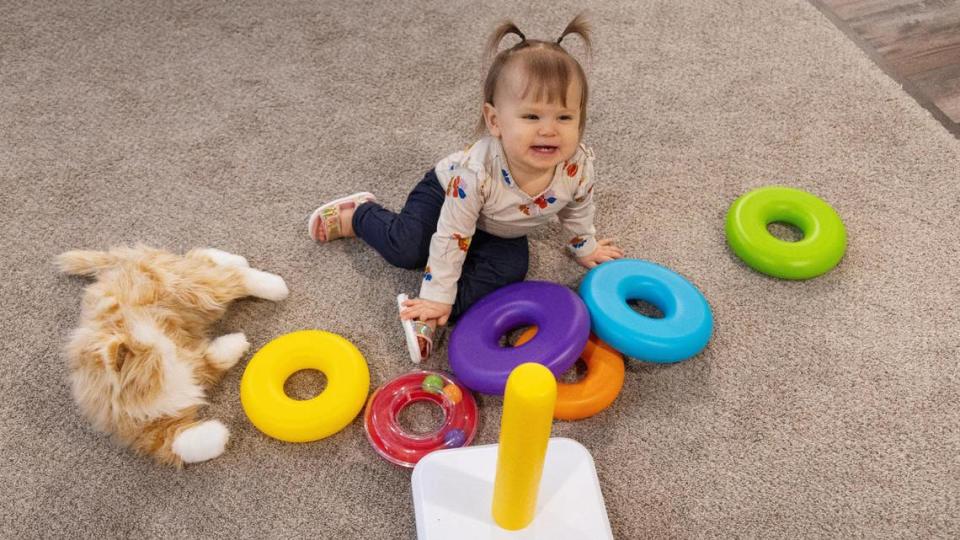
Aubrey Nobili said they were elated when they first learned they were pregnant with Vivi. They bought a baby book to fill out for her as a keepsake, where they would document all her firsts — her first words, her first birthday, other celebratory milestones.
It remains blank, tucked away in a closet.
“She didn’t even get a cake to smash on her birthday, because it was a choking hazard,” Nobili said. “There’s a lot of moments that we grieve.”
Medical leaders paint grim picture for maternal health unless Idaho alters abortion law
After Statesman report on ‘toxic’ workplace, CDH board hires consultants to investigate
Idaho needs doctors. But many don’t want to come here. What that means for patients

